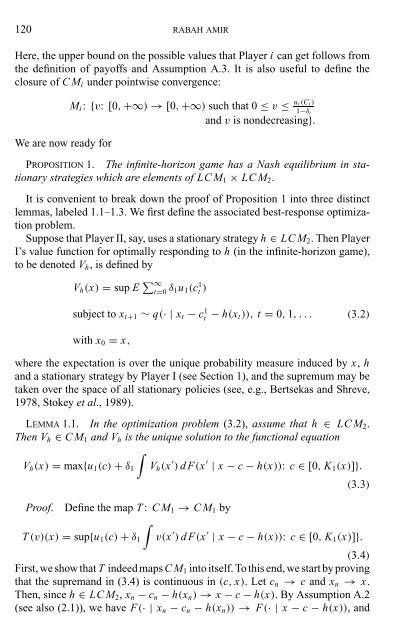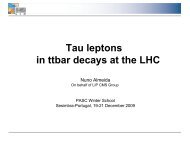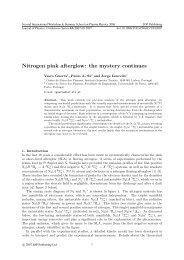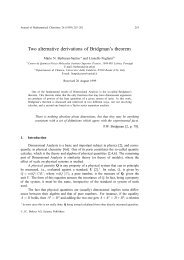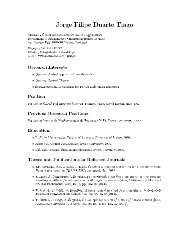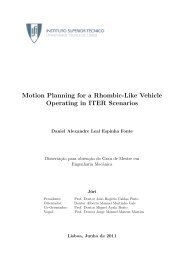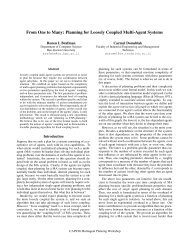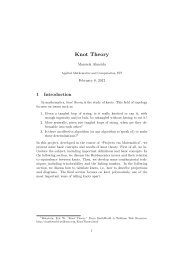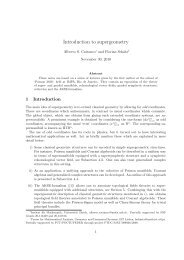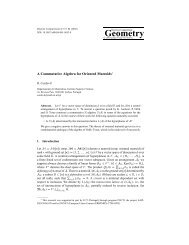Cournot Oligopoly and the Theory of Supermodular Games
Cournot Oligopoly and the Theory of Supermodular Games
Cournot Oligopoly and the Theory of Supermodular Games
Create successful ePaper yourself
Turn your PDF publications into a flip-book with our unique Google optimized e-Paper software.
120 RABAH AMIRHere, <strong>the</strong> upper bound on <strong>the</strong> possible values that Player i can get follows from<strong>the</strong> definition <strong>of</strong> pay<strong>of</strong>fs <strong>and</strong> Assumption A.3. It is also useful to define <strong>the</strong>closure <strong>of</strong> CM i under pointwise convergence:We are now ready forM i : {v: [0,+∞) → [0, +∞) such that 0 ≤ v ≤ u i (C i )1−δ i<strong>and</strong> v is nondecreasing}.PROPOSITION 1. The infinite-horizon game has a Nash equilibrium in stationarystrategies which are elements <strong>of</strong> LC M 1 × LCM 2 .It is convenient to break down <strong>the</strong> pro<strong>of</strong> <strong>of</strong> Proposition 1 into three distinctlemmas, labeled 1.1–1.3. We first define <strong>the</strong> associated best-response optimizationproblem.Suppose that Player II, say, uses a stationary strategy h ∈ LCM 2 . Then PlayerI’s value function for optimally responding to h (in <strong>the</strong> infinite-horizon game),to be denoted V h , is defined byV h (x) = sup E ∑ ∞t=0 δ 1u 1 (c 1 t )subject to x t+1 ∼ q(· |x t −c 1 t −h(x t )), t = 0, 1,...(3.2)with x 0 = x,where <strong>the</strong> expectation is over <strong>the</strong> unique probability measure induced by x, h<strong>and</strong> a stationary strategy by Player I (see Section 1), <strong>and</strong> <strong>the</strong> supremum may betaken over <strong>the</strong> space <strong>of</strong> all stationary policies (see, e.g., Bertsekas <strong>and</strong> Shreve,1978, Stokey et al., 1989).LEMMA 1.1. In <strong>the</strong> optimization problem (3.2), assume that h ∈ LCM 2 .Then V h ∈ CM 1 <strong>and</strong> V h is <strong>the</strong> unique solution to <strong>the</strong> functional equation∫V h (x) = max{u 1 (c) + δ 1 V h (x ′ ) dF(x ′ | x −c−h(x)): c ∈ [0, K 1 (x)]}.(3.3)Pro<strong>of</strong>. Define <strong>the</strong> map T : CM 1 →CM 1 by∫T (v)(x) = sup{u 1 (c) + δ 1 v(x ′ ) dF(x ′ | x −c−h(x)): c ∈ [0, K 1 (x)]}.(3.4)First, we show that T indeed maps CM 1 into itself. To this end, we start by provingthat <strong>the</strong> suprem<strong>and</strong> in (3.4) is continuous in (c, x). Let c n → c <strong>and</strong> x n → x.Then, since h ∈ LCM 2 , x n − c n − h(x n ) → x − c − h(x). By Assumption A.2(see also (2.1)), we have F(· |x n −c n −h(x n )) → F(· |x−c−h(x)), <strong>and</strong>


